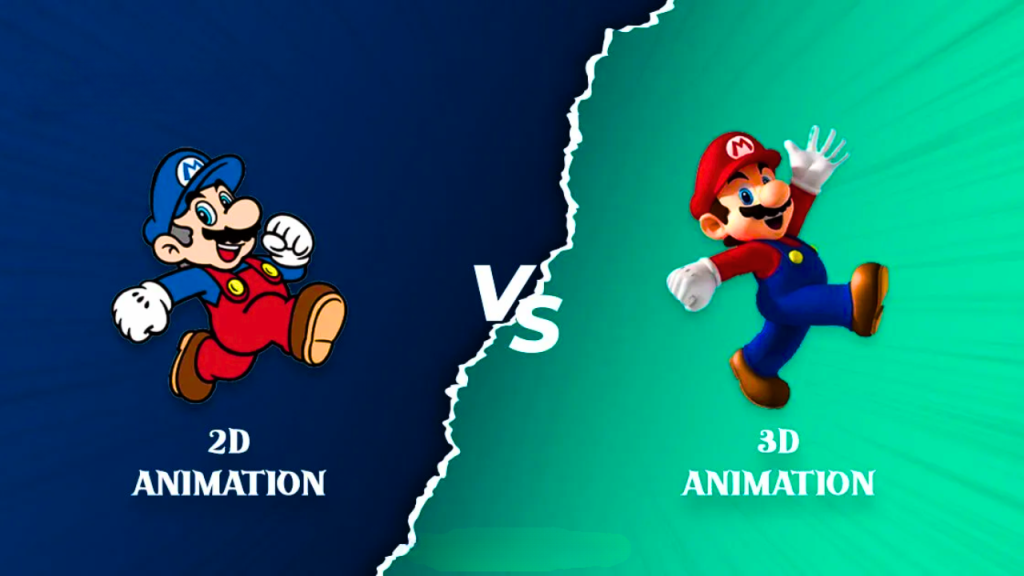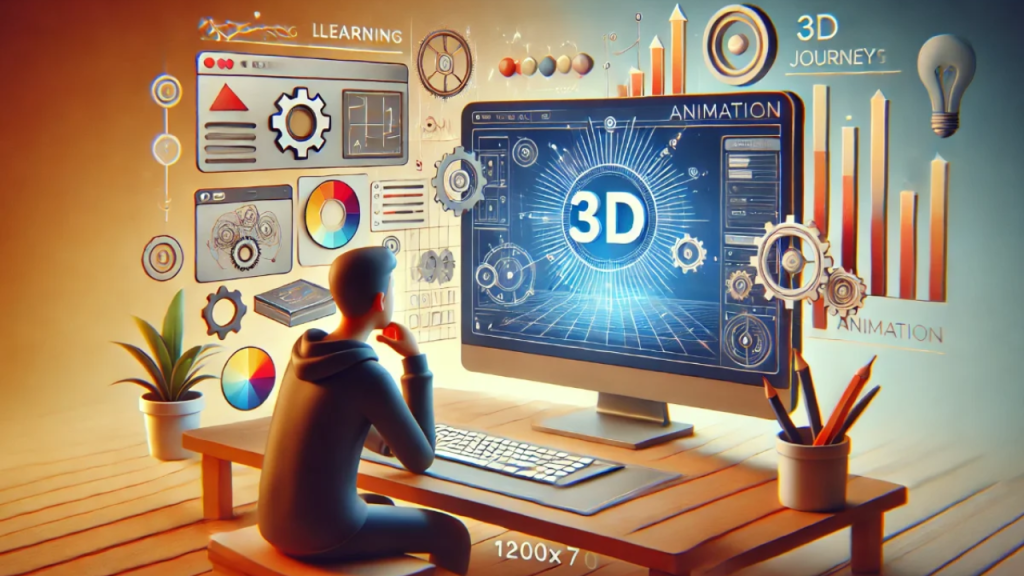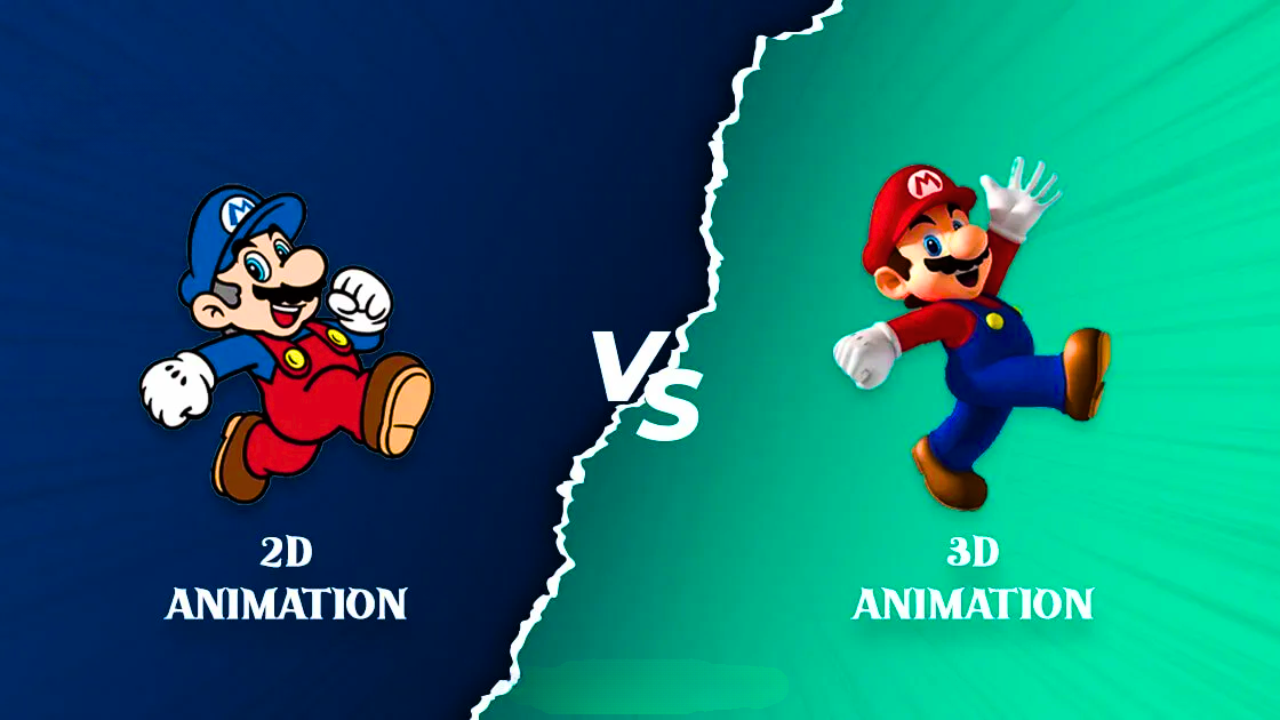2D vs. 3D Animation: Choosing the Right Path for Your Creative Journey

Animation as a discipline has evolved to become fun and diverse attracting talent from all over the world. Due to the development of new technologies, the need and popularity of using graphic videos based on 2D and 3D animation seem rather promising directions in the future. However, a common question among aspiring animators is: what do you think is easier to learn 2D or 3D animation?

In this blog let me guide you through key points related to both forms of animation answering important questions that will help you decide which path seems to be easier—and thus potentially more rewarding—for you. That will take us into learning curves, projects, skills, and time taken to master each type of animation. At the end of the internship, you should be in a better position to be able to tell which of the two forms, suits your needs and capabilities.
Understanding 2D vs. 3D Animation: A Brief Overview
2D animation is the oldest form of animation, and it is created by building up the characters in a flat orientation. As simple as you may imagine, this is like considering some of the Disney movies or famously known TV programs like “The Simpsons”. This style uses simple illustrations on colored paper or paperboards which are still, but have images of movement and passion.
On the other hand, 3D animation provides depth resulting in more effectiveness in making its impression. Some of the 3D animations are movies such as Pixar’s “Toy Story” as well as realistic graphically designed video games. This type involves the design and modeling of characters, objects, and environment and space all at three dimensional, thus making the resulting visualization more realistic.
One of the burning issues of first-time animation designers is whether to organize their animation in 2D or 3D. Both forms have their benefits, though, which one is simpler? Now let’s take a look at the most important and potentially influencing aspects.
Learning Curve: Should I Start with 2D or 3D Animation?
One of the decisions is whether to start with 2D or 3D animation first. Experts also claim that 2D animation is much easier for beginners since no special software is necessary at the beginning. Many 2D animations begin with familiar concepts in drawing and more importantly, some fundamental concepts in animations which are timing, spacing, and motion.
On the other hand, tied to hardware 3D animation can be quite cumbersome since it involves comprehending application software for generating 3D graphics, some of which include Maya, blender, and Cinema 4D. As we work in a 3D environment we are more constrained since there are things such as rigging, lighting, and rendering that were not present when working in 2D animation.
But still, 3D animation presupposes the usage of tools that perform some work automating which is easier in this case. For instance, character rigs in 3D can decrease the need for repeating the same movements over and over, so the movement of the stroke is done for the animator and they can just draw in creativity.
Career Prospects: Do 3D Animators Get Paid More Than 2D Animators?
Compared with other job markets, 3D animators are usually more competitive in terms of both pay and vacancies. This is mostly due to the fact that 3D animation is market demanding in basically every field such as movies, computer games, commercials, and virtual reality. Due to the technology being applied in 3D animation, there is a tendency to be more specialized in their work, thus earning better remuneration.
However, 2D animators are also working in the industry due to the increasing demand for television shows, web animations, and indie games. However, 2D roles may not always require the same amount of starting salary as the 3D roles, so if one is indeed a good 2D animator and as he/she establishes one’s style then surely it can demand the competitive amount if one works on some successful projects.
Finally, it is up to the industry to compensate for the skill set of the animator and many other factors. For example, while the shift from 2D to 3D animation in major feature films in Disney Company has proven to higher budget for 3D animation, the requirement of 3D animation in blockbuster productions.
Can You Learn 2D Animation Quickly?
This will allow you to answer the questions of whether 2D animation is easier to learn and whether it is faster to get a handle on 2D animation than 3D animation. Ideally, if you invest your time, you will be able to understand the basics of 2D animation in three months. Fundamental principles such as character navigation, keyframing approach, and first measures of actions are studyable if one is committed.
However, arguably, the process of becoming a fully-fledged 2D animator – much less capable of dealing with the challenge of creating believable movements and facial expressions for the characters – takes a significant number of years. Although it is possible to find out enough in a few months to produce short animations, it will take more time to become good enough for that kind of work.
Is It Too Late to Learn 3D Animation?

To those who are planning to shift to 3D animation at a later point in life, it is not very early. It is available to learners at all levels of education, from fresh-faced students to those who are older, and with such a wealth of information online now, anyone can start. Like any career, there is no standard age that one must be to qualify for a job in 3D animation, or that age determines how well you are going to perform on the job.
Although using 3D has its challenges, the tools and software for creating 3D animations are much easier to acquire for anyone, including basic lessons and tutorials provided by many platforms. I also want to stress that if you are eager to learn this and ready to devote time to this, then age does not matter for this kind of occupation.
Skills Required: Do You Need to Be Good at Drawing for 3D Animation?
Another benefit of 3D animation is that no drawing skills are necessary for either the animator or someone who wishes to create animation. On the contrary, 3D animation seems to depend more on skills such as technical, spatial, and knowledge of software instruments. Doing concept sketching may help in the depiction of scenes but am very certain that it is not mandatory.
2D animation relies on drawing skills since every scene of the animation is drawn by hand or produced with the help of graphic tablets and computer programs. To pen this, I believe that to anyone who loves drawing and doing some body/character building, 2D animation seems natural. However, if you are more on the software manipulation side and more interested in technical issues then 3D could have been a simpler career option for you.
Visual Appeal: Why Does 2D Animation Look Better Than 3D to Some People?
This is so because 2D animation gives a feel of style and results to users who have grown up watching cartoon movies. One thing with traditional hand-animated movies is that they always give the audience a warm feeling of creativity, unlike 3D ones. This very raison d’être makes 2D animation suitable for specific kinds of shows, like cartoons catered toward children or independent movies.
However, compared to 3D animation which despite being photorealistic might look too ‘perfect’ or lack the free-flowing movement of the two-dimensional kind that many animators find perfect for their productions. But now due to the development in 3D technology, the animators can produce some rather stylized looks that give the work more of a 2D feeling while still adding the enhanced depth of field of 3D.
Which Takes Longer: Animating in 2D or 3D?
Altogether, the production of 2D animation takes more time than other types of animation mainly because of its frame-by-frame feature. Each movement requires illustration to happen which makes it a time-consuming task. The animation in our case even the small scenes involves the use of many frames which may range between two hundred frames.
However, 3D animation is a bit faster in some areas as well. Once a character is modeled in 3D and rigged the animators can move the limbs and in effect animate them without having to redraw every frame to make the model move which is a great time saver. Nonetheless, detailed scenes, elaborate lighting, effects, or physics-based material in 3D may still take time.
The Ethical Shift: AI’s Role in Animation
It is important to notice that the animation world has transformed because of AI. Today’s AI tools can draw simple frames, and design character rigs, while more advanced ones can write scripts for fundamental animations based on prompts. While some animators are afraid that soon they will be out of work as companies will replace them with artificial intelligence, others view new technology as an opportunity to improve their performances.
In both 2D and 3D animation AI can help in reducing repetitive tasks, which thereby can put more emphasis on the different regions like storyboarding and other creative stuff. It can rescue time-consuming work for those who do not mind using AI in creating 2D and 3D animations.
Challenges and Rewards: Is 2D or 3D Harder?
Both 2D and 3D animation come with unique challenges:
- 2D Animation: entails time and skills in drawing together with an understanding of how best to make a picture come to life. It is even more challenging because movements must be created manually by animators.
- 3D Animation: requires knowledge of certain software, an understanding of how light and texture work, and the ability to navigate in a 3D environment. To those who are unaware of these tools, 3D can be somewhat more challenging at first.
In any case, each form has its advantages and disadvantages, and it may be difficult for one animator and easy for the other at the same time. The way to determine which is ‘easier,’ is by trying both, and seeing where your personal preference and aptitude are.
Choosing Your Animation Path
Hence it is clear that both, 2D and 3D animation are equally application-based and equally fulfilling professions. So, there are certain lessons when choosing a path that is connected with certain tools and creative opportunities. If you are interested in drawing and love the concept of creating characters, the 2D style may be for you. However, if you love to be surrounded by deep worlds, technical stuff, and the technicalities of animated creation then 3D might be better for you.
It is also notable that, with the expansion of the industry, more of what can be termed hybrid skills are proving useful. There’s an opportunity to become even more versatile by learning both 2D and 3D animation to eventually get even more work.
Conclusion
It has to be noted that animation is a rather promising area and 2D and 3D animations open different opportunities. Your decision depends on your preference, abilities, and desired working specialties. Learning the basic distinctions and issues inherent in each type should enable one to pursue a course relevant to one’s talent and goal.


